In moments of anxiety and stress, finding comfort can feel like a challenge, yet something as simple as a teddy bear can provide a surprising amount of emotional relief. In this article, we explain the scientific facts about how teddy bears help with anxiety and stress in clear, easy-to-understand language, and provide practical, effective tips that anyone can use.

These soft, familiar companions offer a sense of security, reduce feelings of tension, and create a tangible way to cope with emotional strain. From adults facing the pressures of daily life to children navigating new challenges, teddy bears serve as small but powerful allies in emotional wellness.
Emotional Support for Adults
Adults often underestimate the power of tactile comfort, yet hugging or holding a teddy bear can create a sense of calm that words cannot convey. Studies show that physical touch and sensory engagement can reduce cortisol, the hormone responsible for stress, which explains why a simple cuddle can make a noticeable difference.

A carefully chosen teddy bear, soft to the touch and visually comforting, can serve as an anchor during moments of overwhelm. For professionals juggling demanding schedules, a teddy bear on a desk can provide a visual reminder to pause, breathe, and regroup.
For those struggling with sleeplessness due to stress, placing a plush companion by the pillow can create a soothing bedtime ritual, signaling the brain that it is time to relax.

Beyond physical comfort, the emotional significance of a teddy bear, especially one with sentimental value, reinforces feelings of security and stability.
This combination of tactile and emotional support makes teddy bears an accessible and gentle tool for managing adult anxiety.
Comfort and Therapy for Children
Children experience stress and anxiety differently, often without the verbal tools to express their feelings.
Teddy bears can act as mediators, offering a consistent source of reassurance. In therapy settings, children are encouraged to interact with plush companions to articulate fears, practice calming routines, or create imaginative scenarios that reduce tension.
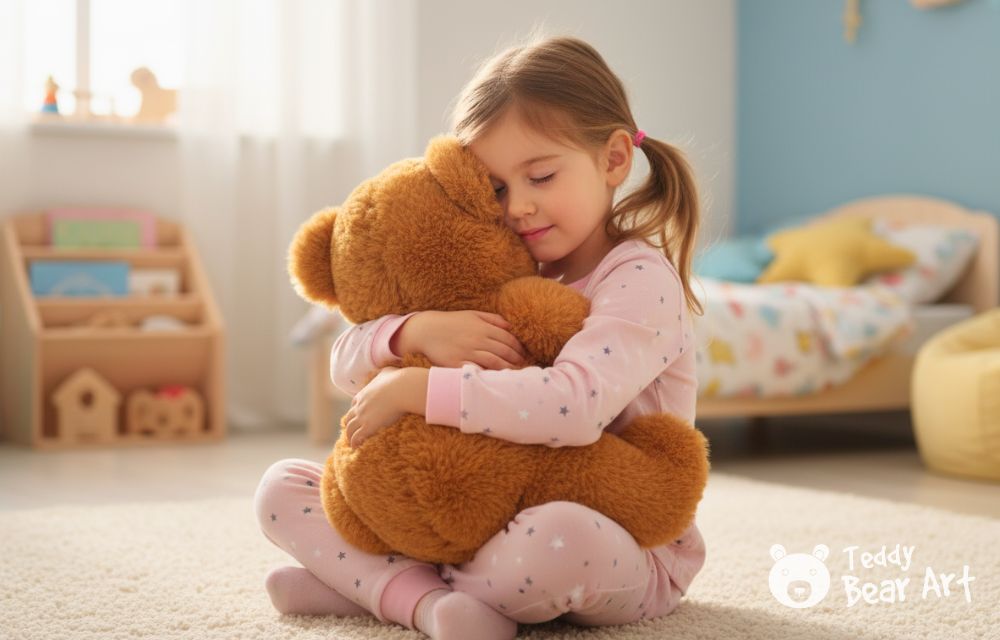
A teddy bear can become an emotional anchor, providing a familiar presence during transitions such as starting school, moving to a new home, or experiencing medical procedures.
Parents can support this process by choosing a bear that resonates with the child, involving them in naming, dressing, or caring for it.

These small rituals foster a sense of responsibility and emotional regulation. The presence of a teddy bear during bedtime, car rides, or moments of anxiety helps children learn coping mechanisms and build resilience, illustrating how tangible comfort supports psychological development.
Scientific and Emotional Insights
How teddy bears help with anxiety and stress is not purely anecdotal. Research in psychology and neuroscience highlights the impact of comfort objects on emotional regulation.

Physical touch, such as holding or hugging a soft object, stimulates the release of oxytocin, which promotes relaxation and reduces stress. Additionally, familiar objects activate the brain’s safety circuits, creating a calming effect during moments of uncertainty.
Emotional attachment to a teddy bear, whether through nostalgia or sentimental meaning, enhances its effectiveness, providing a psychological anchor in challenging situations.
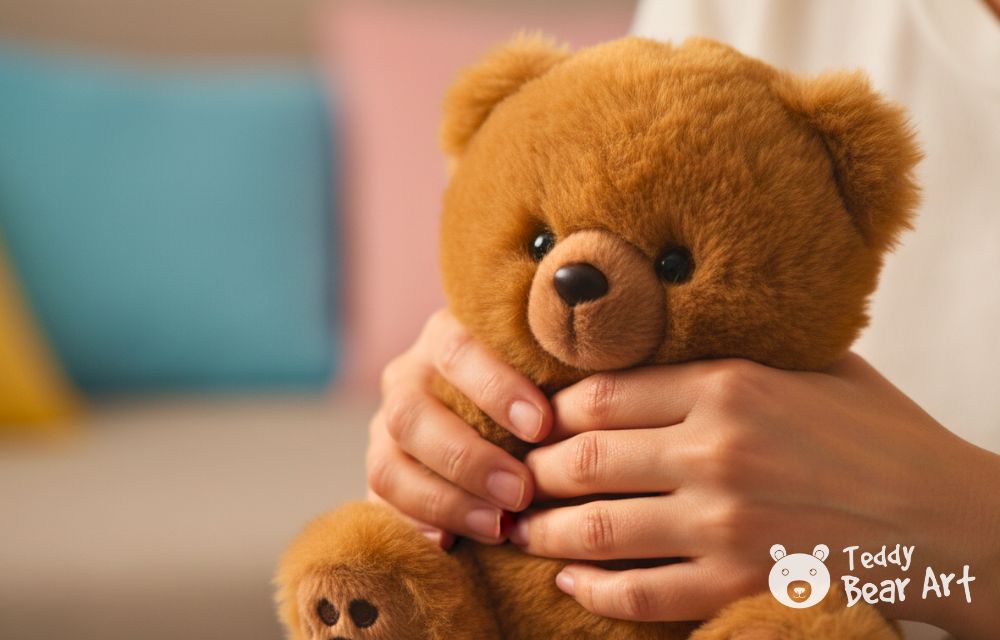
For those interested in a deeper exploration of the science behind comfort objects, the American Psychological Association offers resources on stress reduction strategies and sensory-based interventions.
Engaging with these insights helps clarify why something as simple as a teddy bear can have a meaningful impact on mental well-being.

Practical Tips and DIY Ideas
Incorporating teddy bears into daily life can be simple and creative. Adults might place a bear on a work desk to encourage mindful breaks or use it as a focus object during relaxation exercises.
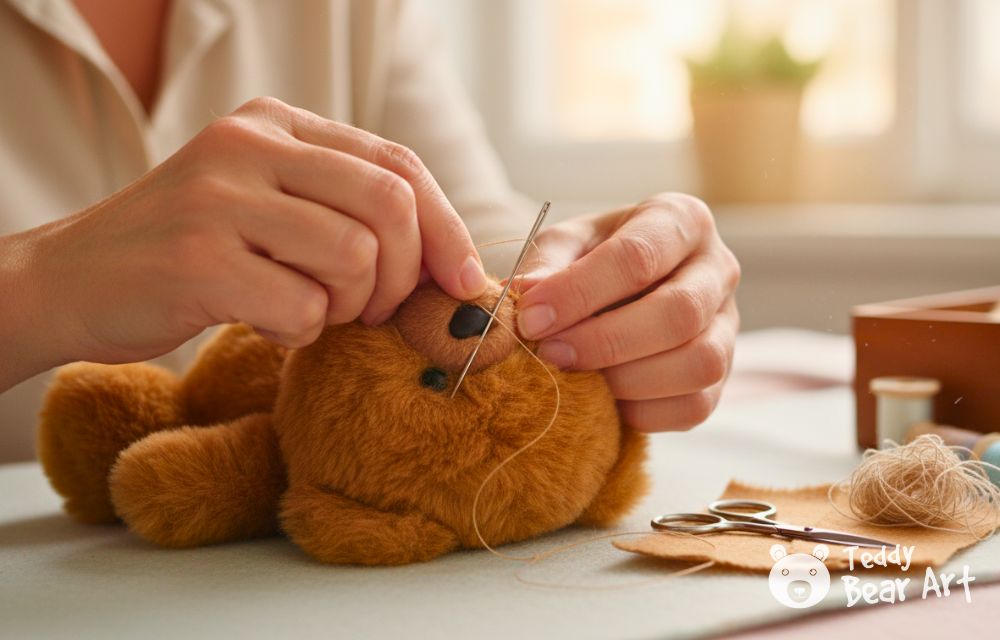
Children benefit from rituals that involve their teddy, such as bedtime stories, guided breathing exercises, or imaginative play. Creating your own teddy bear can also serve as a therapeutic activity, combining the calming effects of crafting with the emotional value of a personalized plush companion.
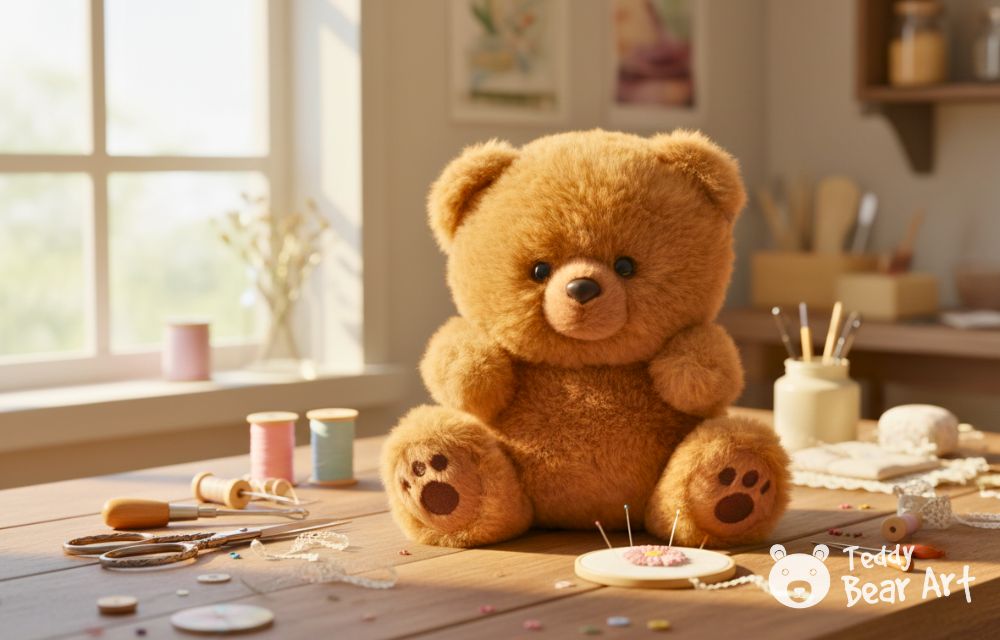
For those who want to craft a cozy, huggable teddy bear that can provide real emotional support, this set of beginner-friendly teddy bear patterns offers step-by-step instructions to create a plush companion ready for hugs.
Choosing the right size, softness, and even color can enhance the bear’s comforting presence. Personalized touches, such as embroidered names or special clothing, increase the emotional bond, making the teddy a more effective tool for anxiety relief.

Displaying bears in visible spaces, like shelves or reading nooks, reinforces their role as comforting companions and provides constant reminders of calm amidst daily stress.
Before You Go
Teddy bears offer a unique intersection of tactile comfort, emotional security, and psychological support, making them effective allies for both adults and children facing anxiety and stress.
By understanding the ways these soft companions reduce tension, promote relaxation, and provide emotional stability, we can integrate them into routines and environments to support mental well-being.
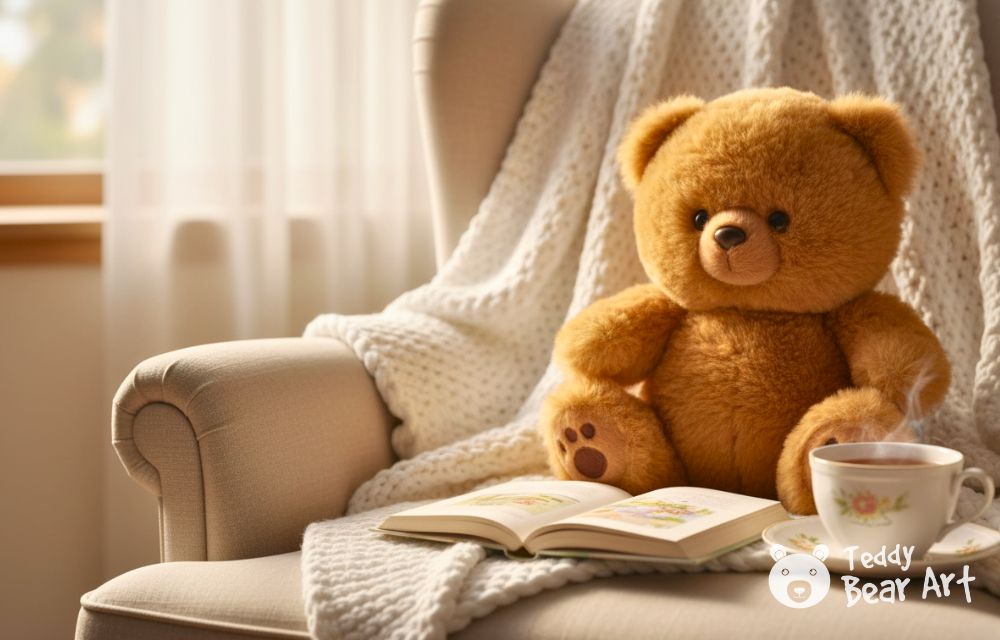
Practical steps, from mindful interactions to crafting personalized bears, enhance their effectiveness, creating both emotional and creative benefits. Embracing the presence of a teddy bear is more than a nostalgic gesture; it is a practical, research-backed method to manage stress and foster emotional resilience.
For more insights into the science of stress and relaxation techniques, explore the American Psychological Association’s resources on stress to complement the comforting presence of a teddy bear.
Get Free Patterns & Be the First to Know!
Want free teddy bear patterns, exclusive tutorials, and a chance to win craft supplies?
Join our Facebook page for behind-the-scenes tips and creative teddy bear inspiration.
Also, look for the subscribe form in the middle of this article to join our next giveaway, and be the first to hear our latest news and receive new patterns as soon as they’re released.
Let’s create together and share the joy of teddy bear making!


Your article truly resonated with me. When I was going through a difficult period with a move, a new job, and constant anxiety, I was unexpectedly helped by an old teddy bear my mother once gave me for my birthday. I found it in the attic, dusty and with a slightly crooked smile, but when I picked it up I felt a warm sense of calm as if I had come back home. Since then it has been on my bedside table, and whenever things get overwhelming I simply hold it and the anxiety eases.
That is why I completely agree with what you wrote. Soft toys can offer real emotional support at any age. Thank you for the article. It reminded me how important these small anchors can be in life. I enjoy reading your work and look forward to more.
Thank you so much for sharing your story. It means a lot to hear that the article resonated with you on such a personal level. Moments like the one you described remind me why I love creating and writing about teddy bears. These small companions often carry more emotional weight than we realize, and your experience is a beautiful example of that.
I am truly glad that your teddy bear brought you comfort during such a challenging time. Stories like yours inspire me to keep writing and creating content that supports and uplifts others. Thank you again for your kind words and for taking the time to share your memory. I appreciate it deeply and I hope my next articles will be just as meaningful for you.